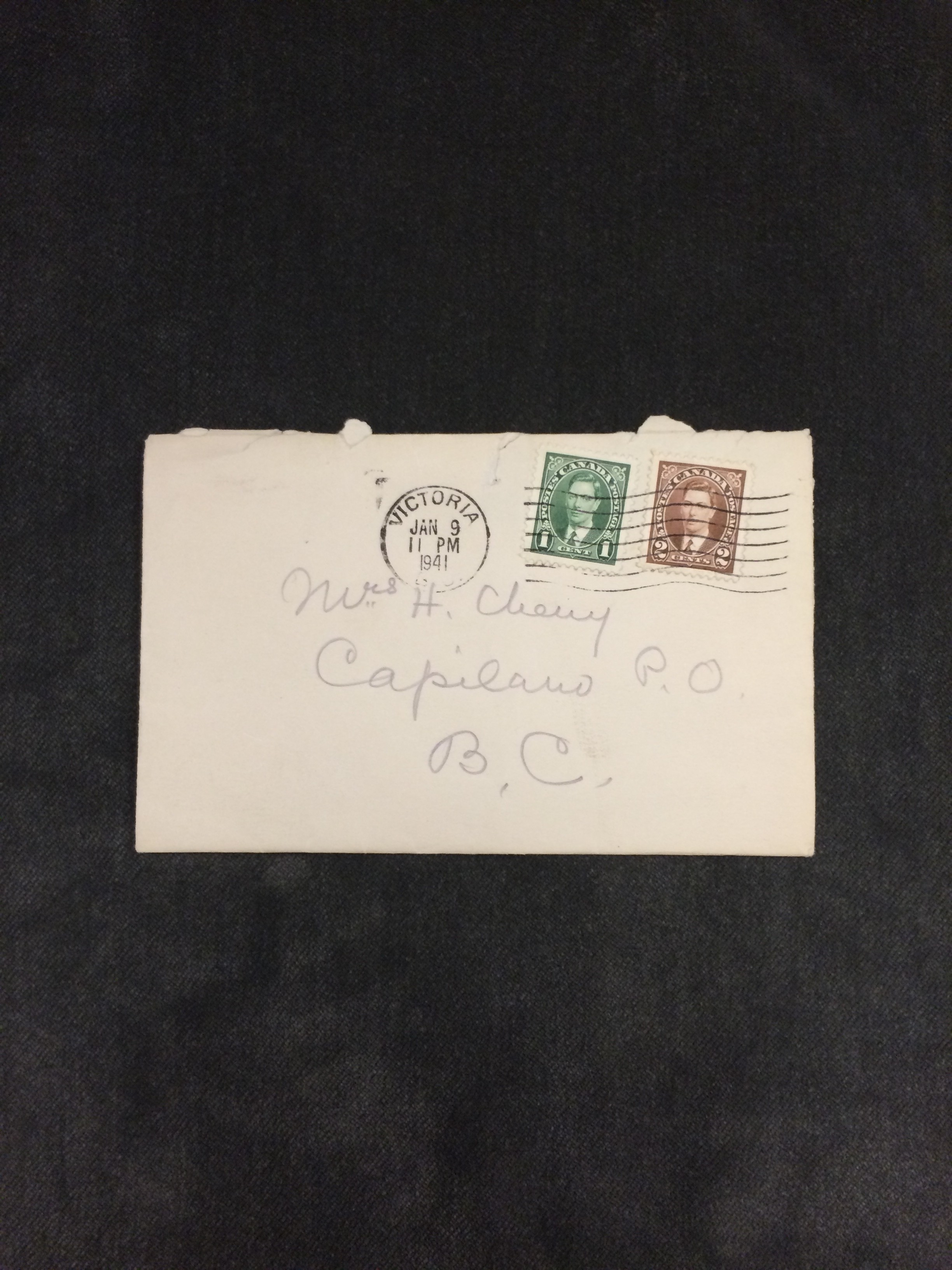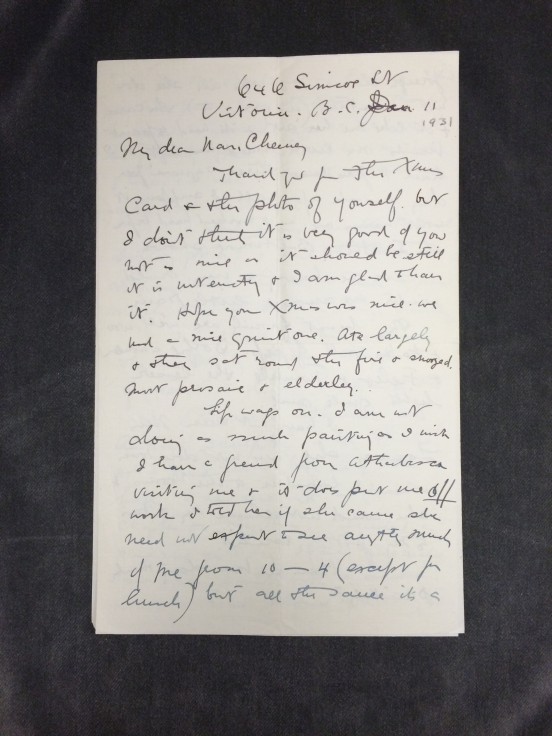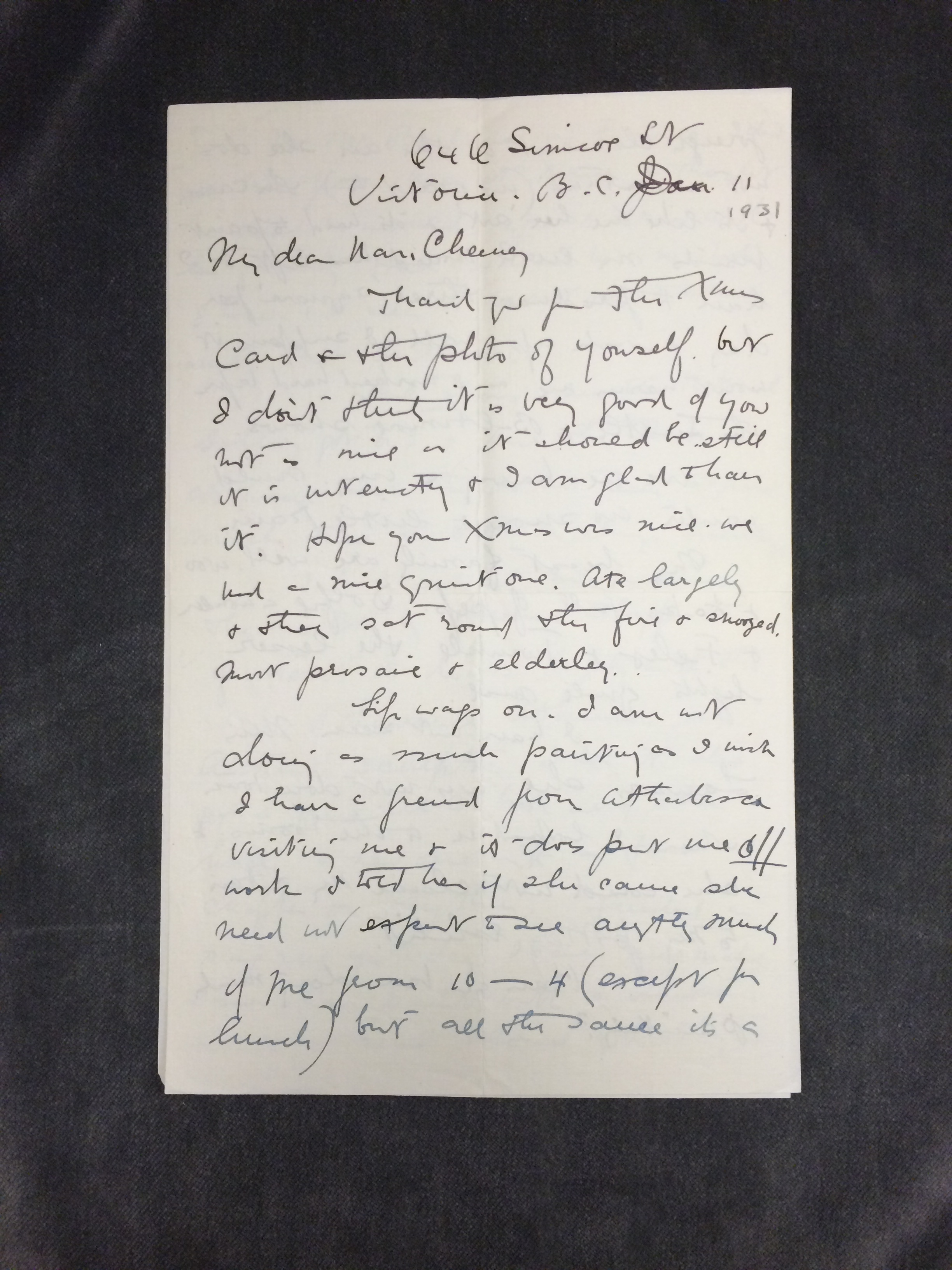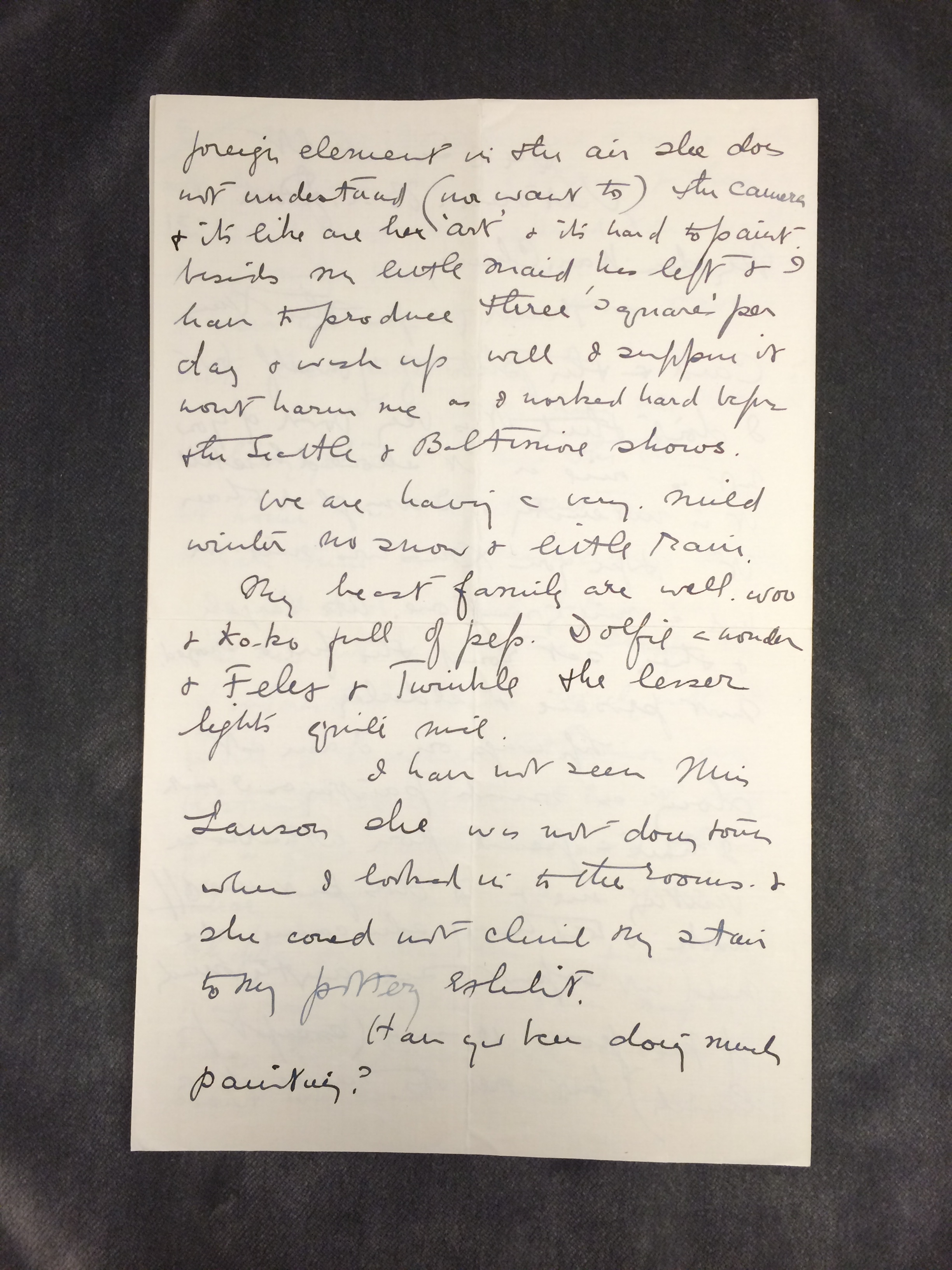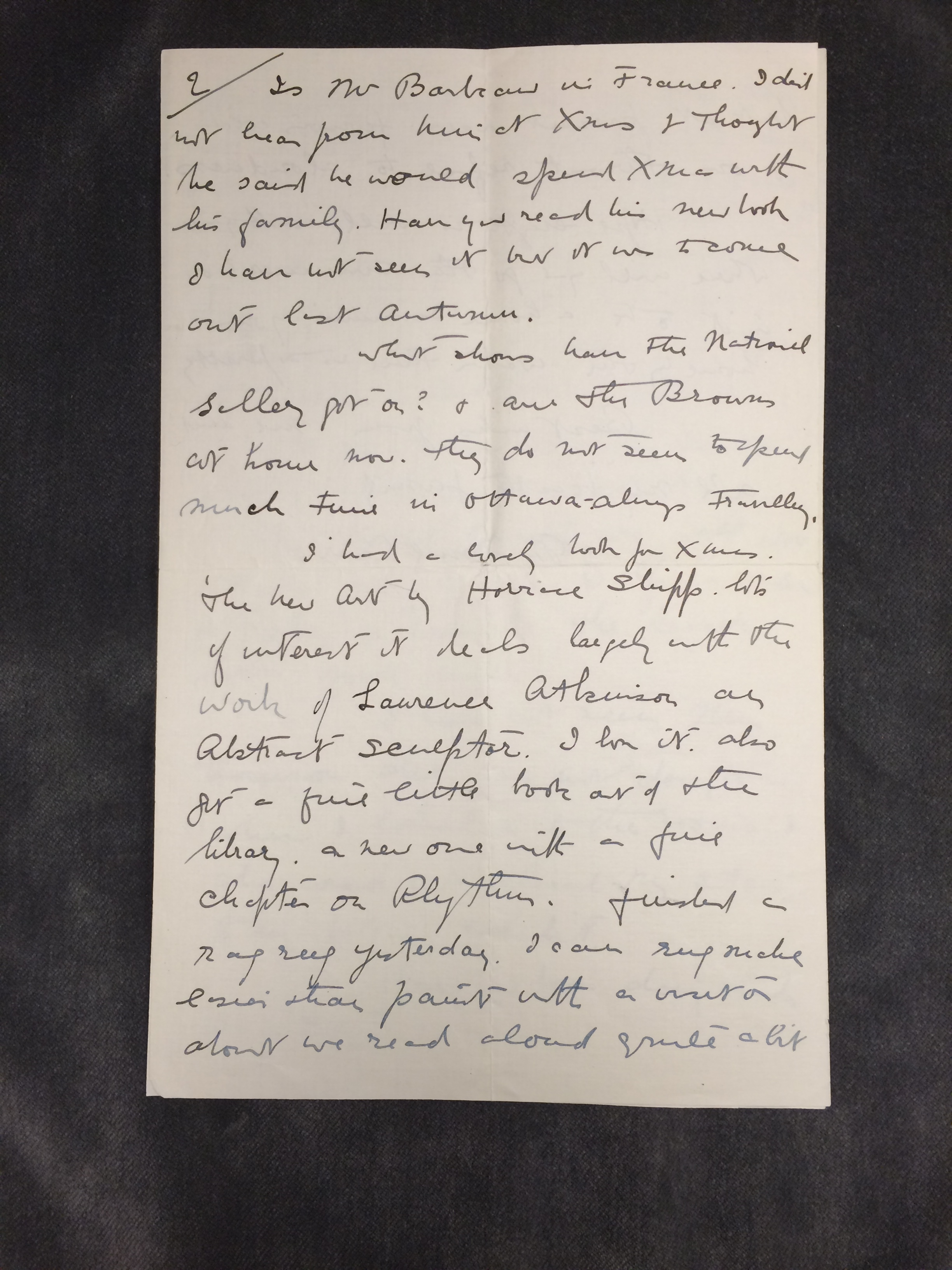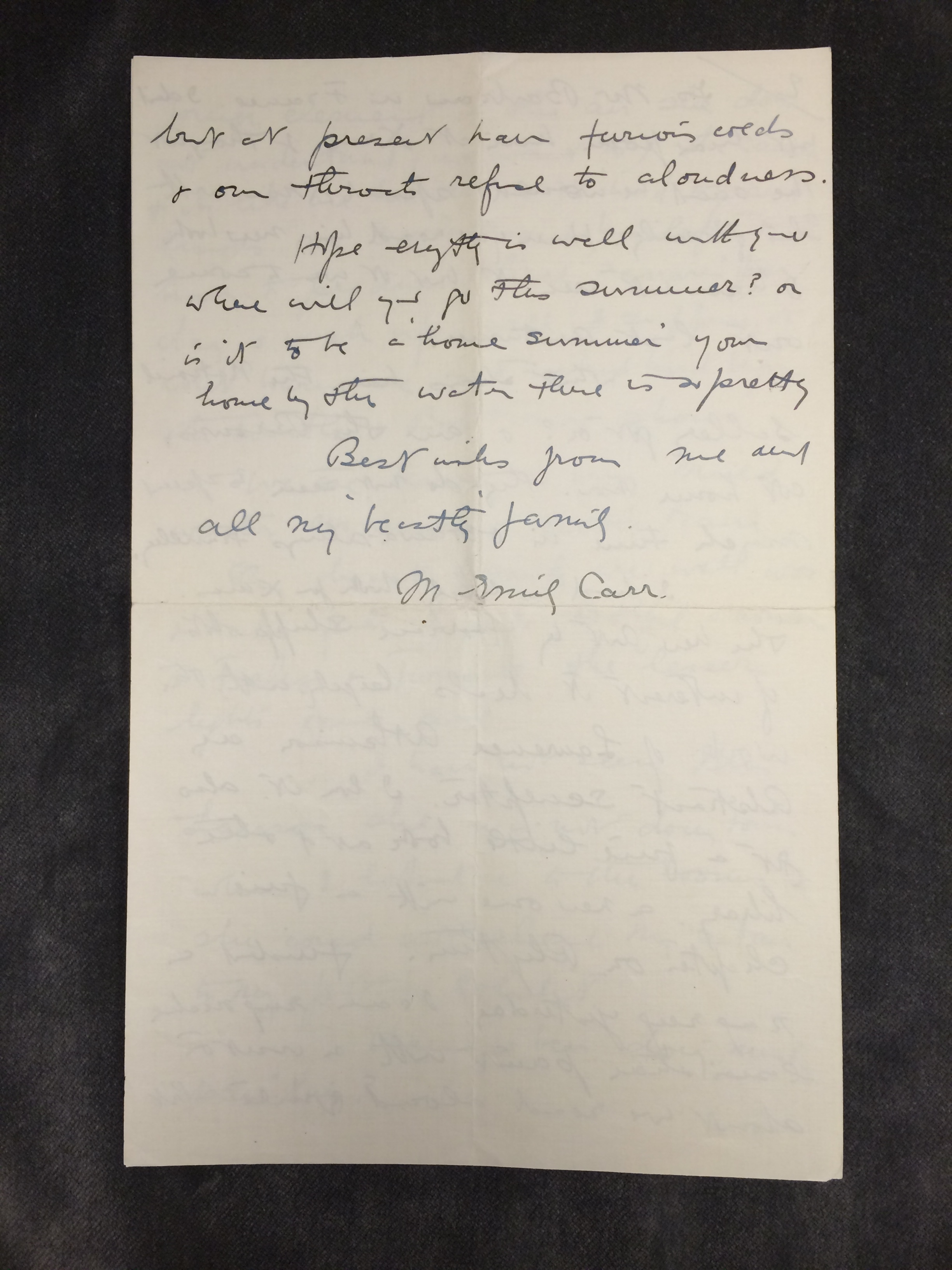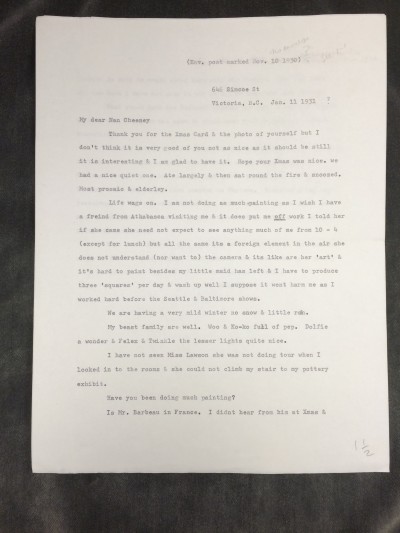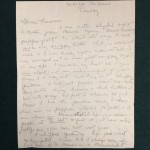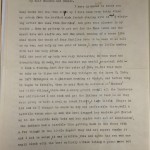My beast family are well. Woo & Ko-ko full of pep. Dolfie a wonder and Felex and Twinkle the lesser lights, quite nice. Emily Carr to Nan Cheney
This is one of the more amusing letters of the collection. You can really get a sense of Emily’s personality and the relationship she has with Nan Cheney. It’s joking at times, then completely serious, evolving into a loving and caring recollection to a best friend. The two met in 1927 so at the time of this letter they had already been in correspondence for four years.
This letter sheds light on Emily’s “recluse” status she has a reputation for. She mentions how a friend of hers is visiting, and how this gets in the way of her work. Her paintings are her life evidently, and it’s something she focuses deeply on all the time, with little breaks or time to relax.
Enlarge

City of Victoria Archives
However, she did get much joy from her dogs! Penning them as her ‘beastly family’ it’s clear they held a soft spot in her heart. They are mentioned throughout this letter fondly, even more than people in her life. Emily went on later to draw portraits of her dogs and to create a calendar of stories about the sheep dogs she cared for. These drawings and stories were reproduced in a storybook called “Emily Carr and her Dogs,” by the publishing house Douglas & McIntyre in 2005. Emily also kept a Monkey named Woo and a parrot. She mentions them too, in this letter.
Enlarge
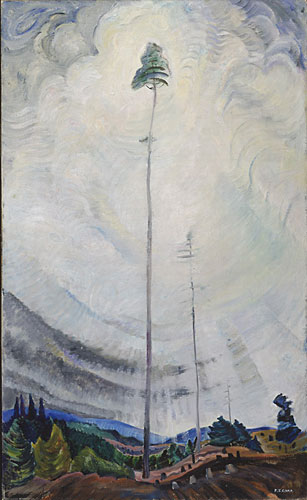
Vancouver Art Gallery
An interesting comment in this particular letter is Emily’s reference to the book The New Art by Horrace Shipp. At the time she wrote this letter to Nan, she had begun a new phase in her career that focused primarily on landscape painting in forest settings. The book she mentions focuses on non-representational art, or in other words, abstract art. Although Emily clearly depicted scenes from Canada’s West Coast, some of her work at this time is more abstract as she started to conceive nature as an embodiment of God. It is possible this book was a result of this new interest or was even an influence that pushed her to pursue this direction further.
Lastly, I wanted to comment on her penmanship in this letter. I find it quite difficult to read her writing without the aid of the transcript but there is something so loveable about her sloppy cursive. Notice too, the folds in the page forming a cross down the middle of the pages. This was typical of her letters to Nan, as she placed them in a small rectangle envelope.
Enlarge
